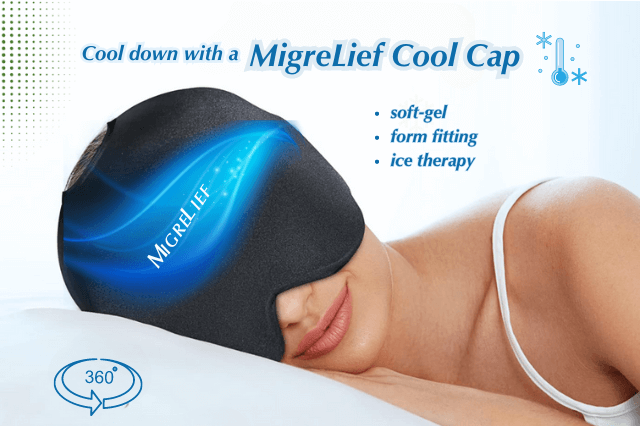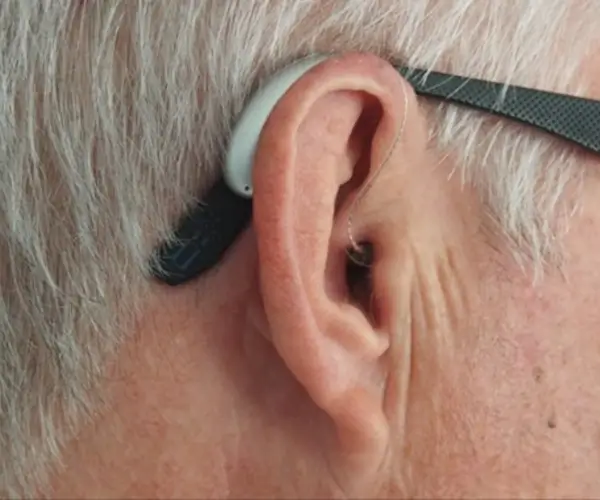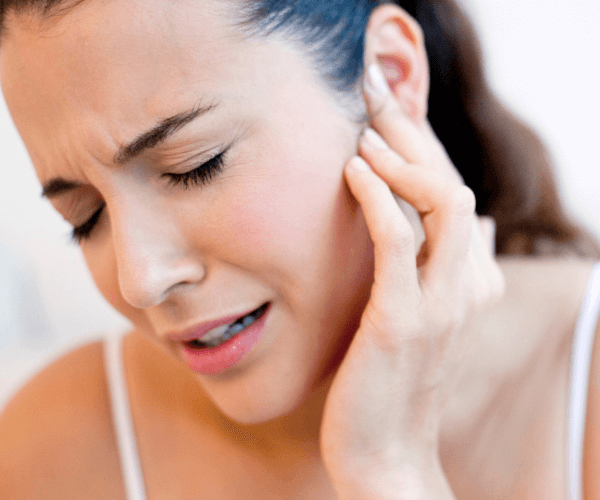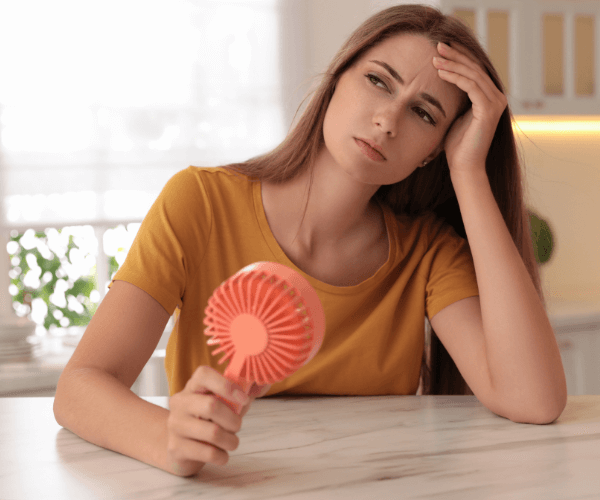Summer is the season for beach trips, pool days, and outdoor fun. But for people with migraine, summer can be a real bummer. Between the heat, bright light, and changes in routine – migraine triggers are around every corner.
But migraine doesn’t have to ruin your summer. With the right planning and know-how, you can prevent migraines from spoiling your fun in the sun. Read on to learn why summer migraines happen and what you can do to avoid them.
Why Summer Weather Triggers Migraines
Weather changes are a common trigger for over 53% of people with migraine.1 And summer brings a slew of weather changes and potential triggers. Here are a few reasons migraines can be triggered by hot weather:
Barometric pressure changes
As the seasons change, so does the barometric pressure. And this is bad news for people with migraine.
Barometric pressure, also known as air pressure, measures the force or weight of the earth’s atmosphere. It shifts depending on the temperature, altitude, and water vapor. Research suggests people with migraine are more sensitive to these shifts. One study found that even minor fluctuations in barometric pressure can trigger migraine attacks.2
As the temperature climbs in the summer, the barometric pressure drops. This can cause blood vessels to swell, which may aggravate migraine.
Sunlight intensity increases
Light sensitivity is super common among people with migraine. According to the American Migraine Foundation, between 85 to 90% of migraineurs experience sensitivity to light.3 Since sunlight is more intense in the summer, this can make it a tricky time for people with migraine.
One study looked at headache patterns for over 1,000 people living in the Arctic. It found people with migraine were more likely to have headaches in the bright, summer season.4
On the flip side, people without migraine had more headaches during the dark, winter season.4 This suggests that increased sunlight in the summertime may trigger migraine attacks.
Dehydration
You sweat more in the summer thanks to the hot weather. This can make it easy to become dehydrated in the summer months. And dehydration is a common trigger for headaches and migraines. Not to mention, people tend to be more active in the summer, which increases your daily water needs. This can also set the stage for dehydration – unless you’re upping your water intake.
How to Prevent Summer Migraines
By now, you understand why summer can make you more vulnerable to migraines. So, let’s get to the good stuff: what you can do to prevent them.
1 – Drink up
Drink plenty of water to stay well hydrated. If you’re doing something physically active, like beach volleyball or swimming, drink even more. Water needs vary depending on your body type, activity level, climate, and health conditions. But according to health experts, here are some general guidelines for daily water intake:5
Males: 15.5 cups (3.7 liters)
Females: 11.5 cups (2.7 liters)
One easy way to gauge your hydration levels is to peek at your urine. If it’s clear or light-colored, you’re drinking enough. If it’s dark yellow, that’s a sign of dehydration. When choosing summer beverages, opt for water or electrolyte drinks. Iced tea and cold sodas may be refreshing. But they contain caffeine, which can trigger migraine for some.
2 – Stick to schedules
Schedules often get thrown off in the summer. Kids are home from school. The sun stays out longer. And in general, the pace of summer tends to move slower.
This can disrupt routines, which can spell trouble for migraine. You may skip meals or skimp on sleep – both of which can trigger migraines. The sizzling summer months can make it tempting to get lax with routines. But do your best to stick to consistent meal and sleep schedules. That way, you’ll be less likely to have a migraine attack ruin your summer fun.
3 – Check the weather
Extreme weather changes can trigger migraines for some people. High humidity, wind, dry air, temperature changes, and shifts in barometric pressure are some of the common culprits.
If you’re sensitive to weather changes, it’s a good idea to keep an eye on the forecast. That way, you can alter plans if weather triggers are headed your way. Or at the very least, have a migraine toolkit handy.
AccuWeather has a great feature that allows you to check the migraine risk for each day. Simply plug in your city and zip code and it’ll show you the best days to get outdoors, which days could be problematic.
4 – Wear some shades
The sun’s glare can be brutal in the summer. This can trigger migraine attacks for many people with migraine.
One simple way to avoid this is to invest in some polarized sunglasses. These can reduce glare and help block out bright lights. FL-41 glasses can also help relieve light sensitivity. They have a special tint that targets the wavelengths linked with photophobia.
Whichever shades you choose, keep them handy whenever you head outside. And if the sun peeks through the sides of your shades and it bothers you, wear a hat.
5 – Plan breaks from the heat
You don’t have to skip all the summer fun just because you have migraine. You can still enjoy picnics, pool time, and BBQs. Just be smart and plan breaks from the sun. For example, if you head to the beach, find an air-conditioned store close by in case you need to cool off. Or if you visit a theme park, take breaks from outdoor rides to cool off in the shade.
Keep a MigreLief Cool Cap in your freezer or ice-chest and slip on to cool down on hot days.

6 – Shift your exercise routine
Between heat, glare, humidity, and dehydration, exercising outdoors in the summer can be a nightmare for migraine. If you do outdoor exercise, like running, cycling, or tennis, consider shifting your workouts to early morning and sunset. During the heat of the day, stick to indoor workouts to stay cool. Lift weights, do some yoga, hit up a spin class, or swim in an indoor pool.
7 – Upgrade your picnic food
Many common picnic foods are migraine no-nos. Hot dogs, cold cuts, and other processed meats are high in nitrates, which can trigger migraine in some people. Alcohol can also aggravate migraine. So, while cold beers and wine spritzers may sound fun, they could be risky.
To prevent this, think outside the traditional picnic basket. Chicken wraps, pasta salad, watermelon, and hummus are all picnic-ready and migraine-approved. And consider alcohol-free drinks like ginger ale or lemonade to cool off.
8 – Watch out for fragrances
Many summer products like sunscreen and insect repellant contain fragrances with strong scents. If you’re sensitive to odors, this may aggravate migraine. To minimize this risk, opt for fragrance-free versions.
Check your local health store to see what fragrance-free options are available. EWG’s Skin Deep database can also point you to natural, fragrance-free products.
9 – Get nutritional support
People with migraine often have certain nutritional deficiencies. For example, about half of all migraine patients are running low on magnesium.6 This mineral plays a role in over 300 bodily processes. It relaxes muscles, helps nerves communicate, and controls vasospasms that can restrict blood flow in the brain.
But here’s the good news. Research shows supplementing with magnesium can significantly benefit migraine sufferers. Meaning, taking magnesium may help you fit in more summer fun. Also, riboflavin (vitamin B-2) can help support healthy mitochondrial energy reserves (the powerhouses of brain cells) for healthy neurological function and comfort.
Triple-Action Support for Summer Migraine Sufferers
The tips we’ve covered should go a long way to helping you avoid summer migraines and enjoy the season. But if you’d like to give your body some targeted nutritional support, consider Migrelief and fast-acting MigreLief-NOW
Sources
- https://pubmed.ncbi.nlm.nih.gov/17403039/
- https://www.ncbi.nlm.nih.gov/pmc/articles/PMC4684554/
- https://americanmigrainefoundation.org/resource-library/photophobia-migraine/
- https://pubmed.ncbi.nlm.nih.gov/11135027/
- https://www.mayoclinic.org/healthy-lifestyle/nutrition-and-healthy-eating/in-depth/water/art-20044256
- https://pubmed.ncbi.nlm.nih.gov/22426836


